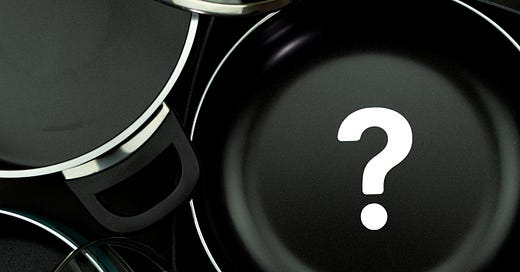Pots and pans—what they are made of and how we use them—matter when it comes to keeping our food optimally healthy and safe to eat. There are legitimate concerns about potential toxicity with some. Here’s a primer on what to look out for and how to choose the cookware that’s right for you.
Thanks for reading Ellie’s Real Good Food! This issue is for paid subscribers with a sneak peek for free subscribers. I hope you will consider upgrading to paid to get the full archive of articles, exclusive recipes, and more.
This article topic was requested by a paid subscriber. I want to write about what you want to know, so please feel free to make requests! Here’s another topic I covered based on a subscriber request: You Asked: Is Meat Really That Bad For You?
Non-Stick Concerns and Best Options
Non stick pans are a breeze to clean and their easy-release surface makes cooking much more fool proof, especially when it comes to egg dishes. But the coating on most non-stick pans can be a concern.
You have probably seen non-stick cookware advertised as “PFOA-free.” PFOAs are one of the thousands of chemicals in the PFAS family —called “forever chemicals” because they linger in the environment and our bodies, and are linked with health issues in humans. (I know, lots of acronyms here. More ahead. Sorry.)
Manufacturers stopped making cookware with PFOAs about 10 years ago. Now, most non-stick surfaces are made of PTFEs instead, which are also a type of PFAS, but are more stable than PFOAs so only “negligible amounts” can migrate into food, according to the FDA. But if your pan is scratched or worn, that damaged surface is more likely to allow PFAS to leach into food. Also, heating a PTFE coated pan on high can cause the chemicals to release into the air.
The bottom line is, if you have a PTFE coated non-stick pan, it is likely safe to use if it is in good condition and you don’t overheat it. Once it gets worn or scratched, toss it out.
If you are looking for a new non-stick pan, consider one with a ceramic coating (such as Green Pan) that is free of both PFOA and PTFE. A well-seasoned cast iron skillet can also work well as a non-stick surface.
Are Aluminum Pans Safe?
Keep reading with a 7-day free trial
Subscribe to Ellie's Real Good Food to keep reading this post and get 7 days of free access to the full post archives.




